I get so many messages, so I want to preface this by first stating that while we are spiritual ourselves, we are not spiritual teachers. If you are looking for spiritual guidance in your own life, then I would recommend speaking to someone who’s life work is spiritual guidance. ❤️
We want to share what the ancients believed about mushrooms, so that you may take their wisdom for your own.
We are particularly fond of going hiking outdoors and going mushroom hunting for chanterelle mushrooms. Mushrooms have a long, ancient history of use amongst traditional hunter-gatherer cultures with a deeply shamanic worldview.
Mushrooms have been used for medicine, food and for shamanic use in order to establish contact with the spirit realm of the Underworld. We know that people during the Neolithic period people ate fungi and mushrooms as part of their diet.
One Example would be the Mirón cave in Cantabria, Spain, the remains of an old woman are thought to be from more than 18 000 years ago. Mushrooms were a source of food, and have had an important impact on spirituality in traditional shamanic cultures and shamanic worldviews.
The Sami of Fenno-Scandinavia have used the Chaga fungus that grows on birch trees in northern forests for healing purposes in order to treat a variety of diseases. They call the Chaga fungus Báhkkečátná and declare it as an important gift from nature.
The Sami have used mushrooms from the Amanita family as well for rituals and shamanic work, particularly associated with the Winter Sun Solstice and the Rebirth of the Sun.
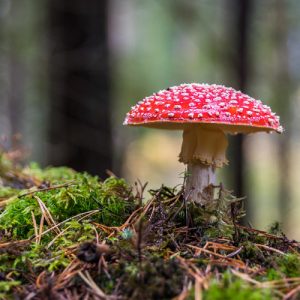
The red little hats of Gnomes and the Scandinavian Tomte might go back to the shamanic use of Amanita Muscaria.
It is believed that the hats are phallic-like symbols and represent the potent force of nature, a force that was believed to be channeled by the powers of the red little caps from Amanita Muscaria.
The Tomte are of course nature-spirits that live in the woods, underground and around us.
If you connect this practice to the fact that Winter Solstice is all about celebrating the rebirth of the Sun so that the potent force of the Sun may indeed come back into nature, it makes indeed sense.
In Central Asia, shamans have special clothing and rituals in order to harvest certain mushrooms, it is that sacred, and amongst the Saami of Fenno-Scandinavia, it is said that a shaman had a vision of being on a spiritual journey in a sleigh pulled by a reindeer.
We all know the image of Santa and the reindeers. Isn’t that interesting? The Noaidi-Shaman of the Sami people is a mediator between this world and the Saivo-Underworld, and with the use of Drumming, the Joik-singing the portals to the Underworld were opened.
Mushrooms are widely known and used in cultures all around the world for medicine, food and spiritual practice.
We find them in fairy tale books, in folk tales and folklore.
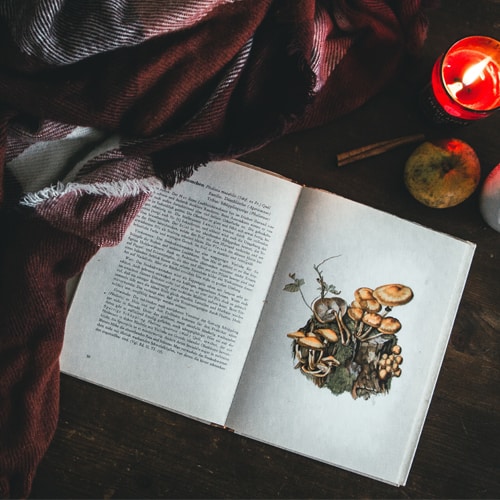
The “Hexenkreis” in High German (witches-circle), called the fairy circle, is believed to be a portal to the spirit realm and is a sure sign of ritual use in many folklore tales, from Ireland to Germany, the apperance of Amanita is usually associated with the little gnomes, nature spirits that sit on top of the caps or hide underneath it. These images are old.
Whenever there is a Hexenkreis in nature, Folklore in Germany tells us that there must have been a witch – an old Hagazussa, an old woman that will jump over the fence with her broom and roam into the wilderness in order to practice her rituals.
The fence hereby is rather a symbol, and so is the Hagazussa. It’s an old tale about the wilderness and the energies therein. Pagan tribes have always lived in the wilderness and could survive off of whatever they could find while out in nature.
This has changed radically with the rise of monotheism and western civilization. But Paganism is wild.
CHECK OUT MY HANDMADE JEWELRY 🙂
(This is my handmade jewelry shop’s website after all 😘)
-
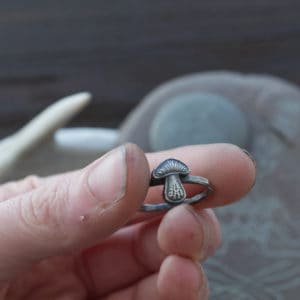
Silver Mushroom Ring
$50.00 Add to cart -
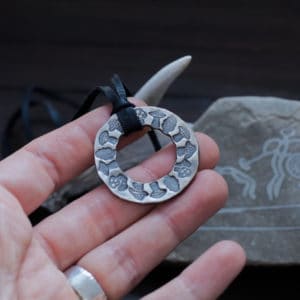
Mushroom Pendant – Hexenkreis / Fairy Ring
$126.00 Select options This product has multiple variants. The options may be chosen on the product page -
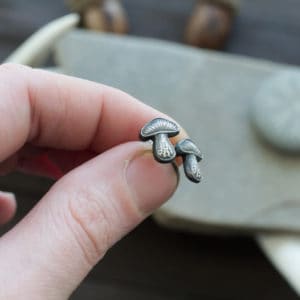
Silver Mushroom Earrings – Nature Jewelry
$73.00 Add to cart
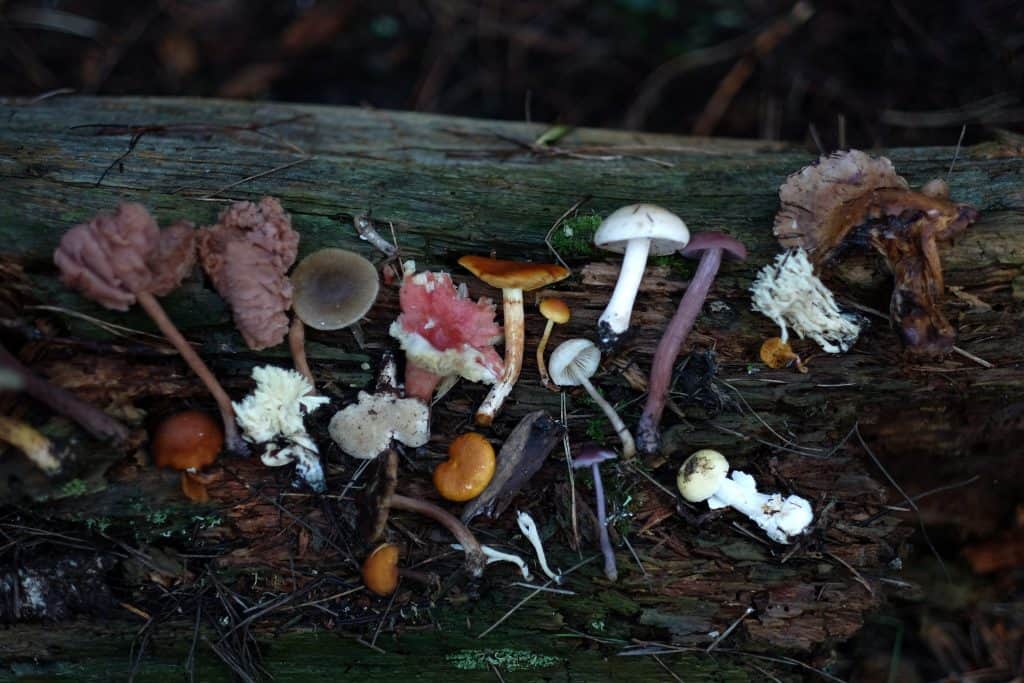
The use of mushrooms such as Amanita dates back at least 6,000 years ago, if not deep into pre-history.
Many tribes in Siberia do have an ancient use for many mushrooms. “They have been depicted in pre-historic Cave Art and Cave paintings and might reveal an ancient use of mushrooms. Mushroom motifs have also been found in the petroglyphs of the prehistoric settlements of the Kamchatka peninsula” (Dikov, 1979).
Along the Pegtymel River, on the coast of the Chukchi Sea in the northeast part of Russia, mushrooms play an important role in the rituals and shamanic work of the Chukchi Reindeer herders. It is along the River of Pegtymel, that mushroom paintings from a thousand years have been found on the cliffs.
From the Koryak tribe and the Itelmen people from Siberia and Asia back to the Saami of Northern Europe, mushrooms have played an important role in order to alter the state of mind from the local shaman in order to do their work in the spirit-realm. The mushrooms, so they say, offers them insight into the visionary world of spirits, ancestors and the Underworld.
Shamans often report seeing nature-spirits and mushroom-people. Mushrooms do the work of the Underworld. They recycle, they transform and absorb. They grow deep down underground, from the womb of Hel, Saivo, Holda/Frau Holle, Durga and Kali, Xibalba, Annwyn and many more.
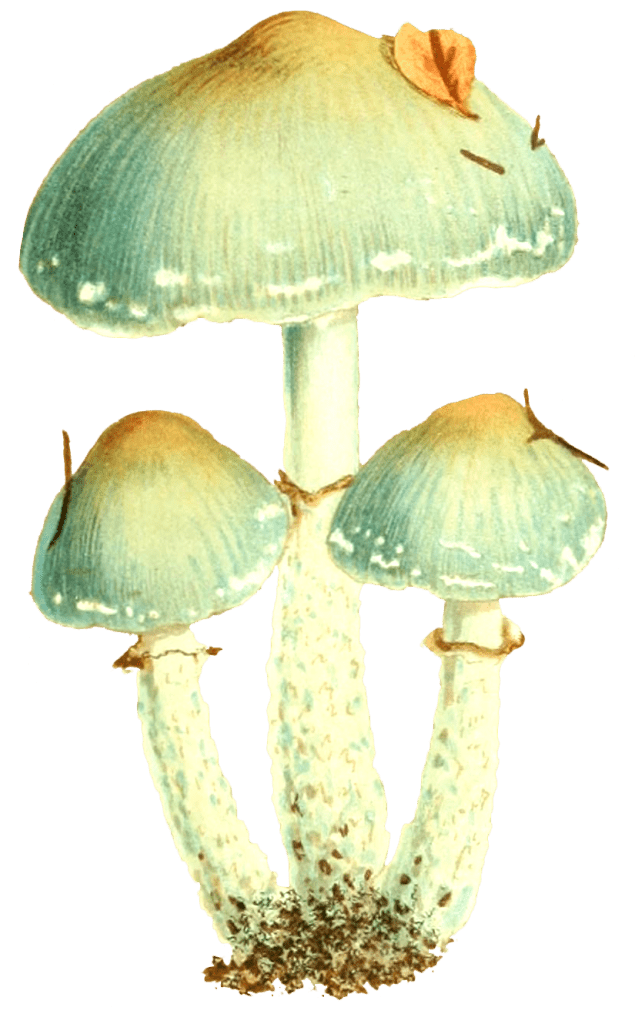
If we study the ancient writing of the Rig-Veda, we can find a sacred substance called “Soma”. The writings of the Rig-Veda are around 3500 years old and can reveal some more interesting information.
The text was written in a deeply poetic kind of way and has numerous references to sacred herbs and plants. Scholars are trying to find out on whether or not “Soma” was indeed the red-capped mushroom from the Amanita family.
Most fungi and mushrooms grow deep down underground as a vegetative mycelium and many do indeed filter out toxins out of the soil, act as a natural sponge and as a natural recycler.
They break down dead organic matter, plants, dead trees and wood, carcass… and will aid in the recreation of new nutrients and fertile soil.
They are nature’s natural recyclers where old becomes new and dead matter is broken down in order to give birth to something new. Certain bacteria and fungi thus help nature to decompose whatever is dead and old.
What is truly fascinating is how mushrooms can be found in many fairy tales and folklore even today. And it is often so, that mushrooms are associated with the Underworld.
The Underworld does not seem to be of Indo-European origin, it is most likely way older and has existed in cultures all around the world with many different terms and words.
It’s a place of chaos, transformation and often a place of Ancestors and is tied to rebirth and the recycling of everything that has died. It’s often portrayed as a womb or a deep underground cave.
The cult surrounding mushrooms does not stop in Europe or Asia. It can be found in the Americas, as well. In Guatemala, there have been found mushroom stones from 1000 BC to 500 AD. The sacred mushrooms, called Teonanácatl, have been used amongst the Olmec, Zapotec, Maya and Aztec cultures. They were also called God’s flesh and were declared as sacred. Many of the sacred herbs and sacred mushrooms were used 2000 years earlier by the Ancestors of the Aztecs.
The Aztecs even had their own God who ruled and protected mushrooms, the Xochipelli. In the 16th Century, a statue of Xochipilli was found nearby Tlamanalco. Xochipelli appears to wear a mask of sacred flowers and also mushrooms. According to the works of Dr. Christian Raetsch, the Lakandon Natives call the Fly Agaric Eh kib lu’um and this means as much as “the light of the Earth”.
One of the most interesting and astounding Cave paintings is the Algerian Tassili shaman painted with a deer face, from 6,000-9,000 B.C.E. Like other Cave Paintings, he seems to also seems to be half human and half animal. The painting is about 5 000 years old if the studies are accurate. This hieroglyph is presently located in Tassili – Ajjer, deep in the Saharan desert.
If this subject fascinates you, I’d like to recommend the work of the German Anthropologist Dr. Christian Rätsch.This Article was written with the intent to research and explore traditional shamanic cultures and their perception and use of mushrooms. I do not condone the use and ingestion of any mushrooms without professional advice. The Wicked Griffin woud like to educate and encourage the study of said cultures. This Article is for educational purpose only.




